Once again, I know there weren’t any formal awards, but I enjoy adding my own even. The categories are as follows: 1st, 2nd, and 3rd place, Best Shohin, American Bonsai, and my personal favorite.
1st Place: Catlin Elm – Ellen Keneshea
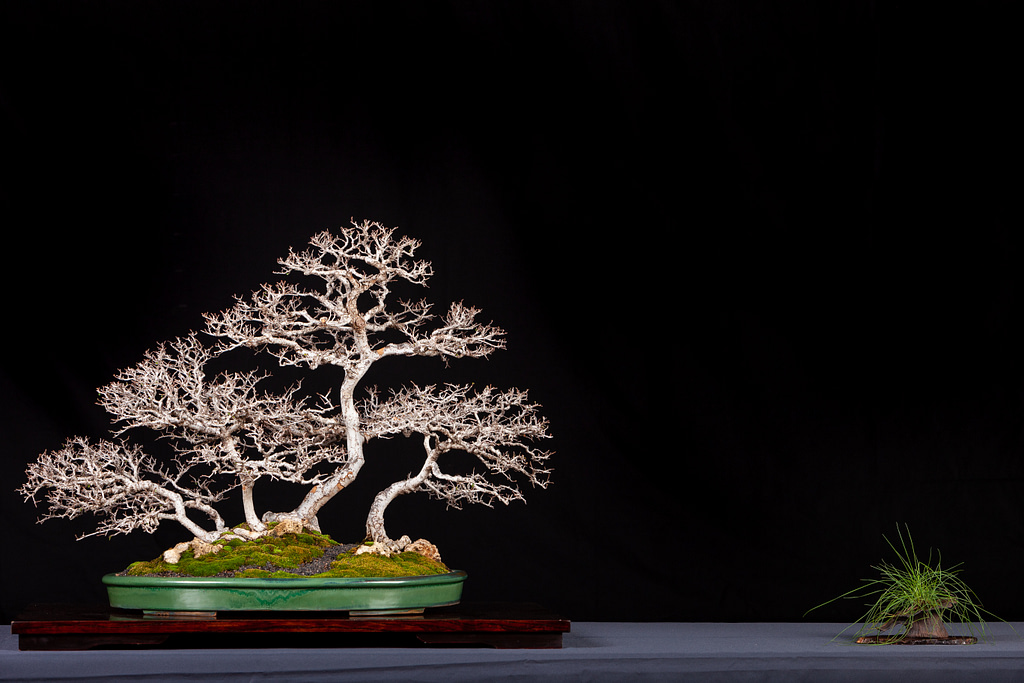
- This tree impressed me more every time I passed it. I love the path through the middle of the two right tree trunks. It relays the idea that there is a path frequently travelled between the trees.
- Negative space makes this tree a higher quality, and really shows in a silhouette show without any leaves to hide that distinction. Negative space is where you see no branching, and can see the background behind the branching. This is part of the balance that is struck to shape and define the trees aesthetics. Less negative space give an aesthetic of abundance and more of a full feel to the tree. More negative space shows a separation between the objects and can depict age. In this case shows a separation of the dominant tree compared to its younger counterparts.
- One of the most important aspects of forest creation is the use of different heights, different planes, different angles, and different trunk thickness. This utilizes all of them. You can’t see well from a 2D photo, but a top down view of the tree would show branches and trunks in all angles, and the trunks resemble what would happen naturally. The trunks on the left really lean away from the shade of the larger main trunk and the trunk on the right does as well.
2nd Place: Shishiohime Japanese Maple – Ed Clark
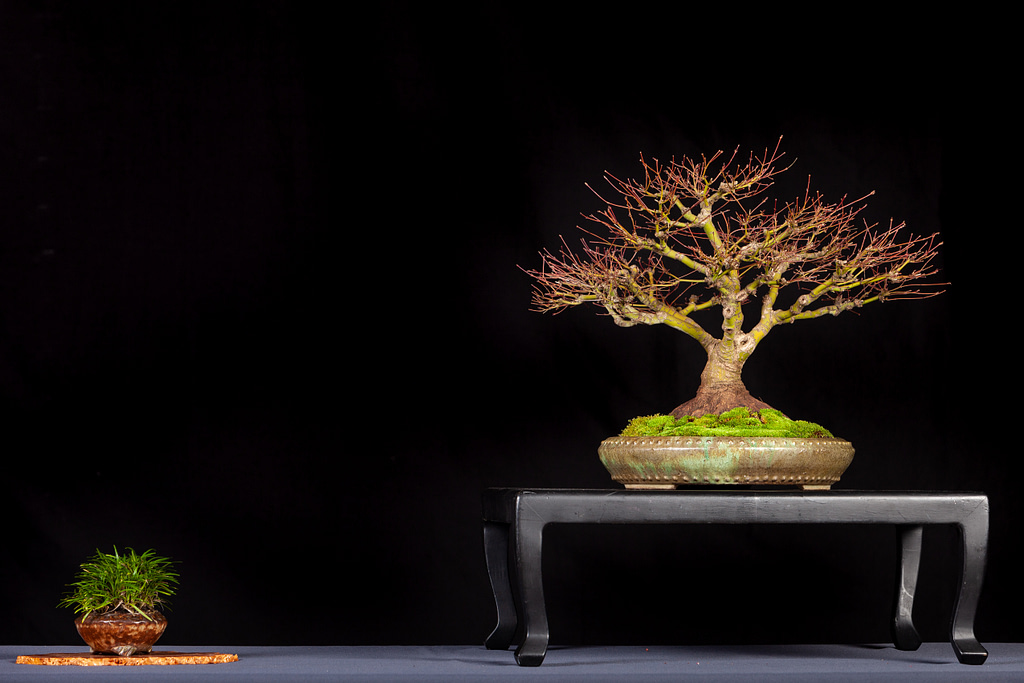
- We don’t see a lot of Japanese maples in Southern California, and even fewer of this quality.
- The red branches contrast greatly with the green bark, bright green moss, and earthy tones of the pot. This is awesome for a winter silhouette and it showed out.
- I’ll be honest, I’m not sure what it is exactly that makes me love this tree so much. It has good negative space to show age in the branching, the branches are well ramified (can’t tell as well from the photo), and knowing the difficulty of cultivating this make me choose it for 2nd place. (Ed Clark isn’t exactly in Southern California, more like the Central Valley, but I’m impressed nonetheless.)
3rd Place: Ume – Tom Lau
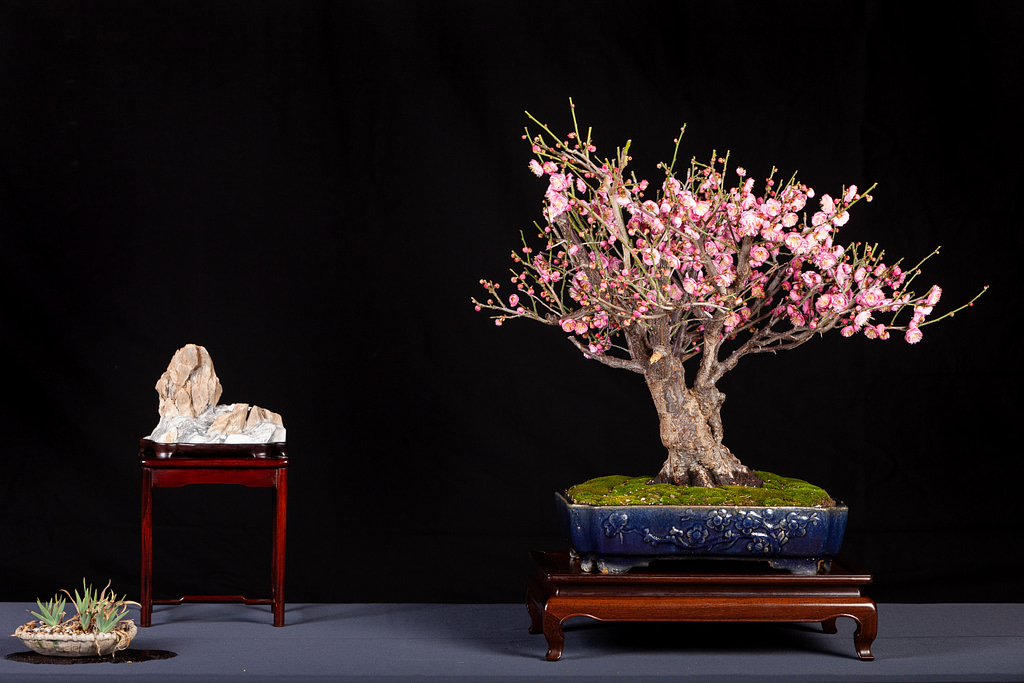
- The presentation of this tree is what makes it impressive to me. The blue pot with flowers on the pot, green moss as a contrast, and the profuse flowering on this ume (Japanese apricot) are stunning. These things combined with a good suiseki on a stand make a great presentation.
- In this design and critique of a ginkgo I talk about how stunning features in trees overshadow imperfections in what we typically look for in bonsai. You see that in this tree. The branching isn’t highly manicured or showing significant negative space, there isn’t a well defined lower branch or typical apex, but none of that matters in part because ume has a different focus in general to display, and also because the presentation is so spot on.
Best Shohin: Cork Bark Elm – Steve Valentine
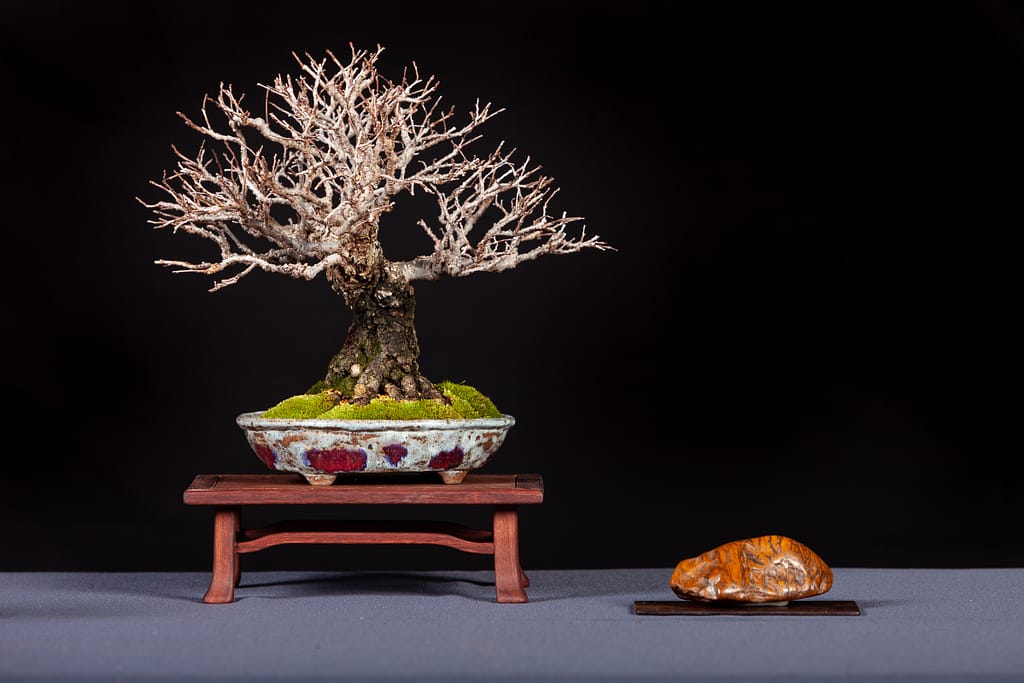
- TO continue on the theme of presentation, this shohin combo is awesome and uses the color contrasts well. The pot colors not only look good with a bare tree, but would be killer with the some yellow fall color Chinese elm foliage. The orange suiseki adds another color to contrast the pot and moss.
- The tree silhouette has a good asymmetrical shape with the lower left branch being held back from reaching the outside of the silhouette which removes a potential for a symmetrical shape.
The Category I Change Every Year: Chinese Elm – Mary Morrissey
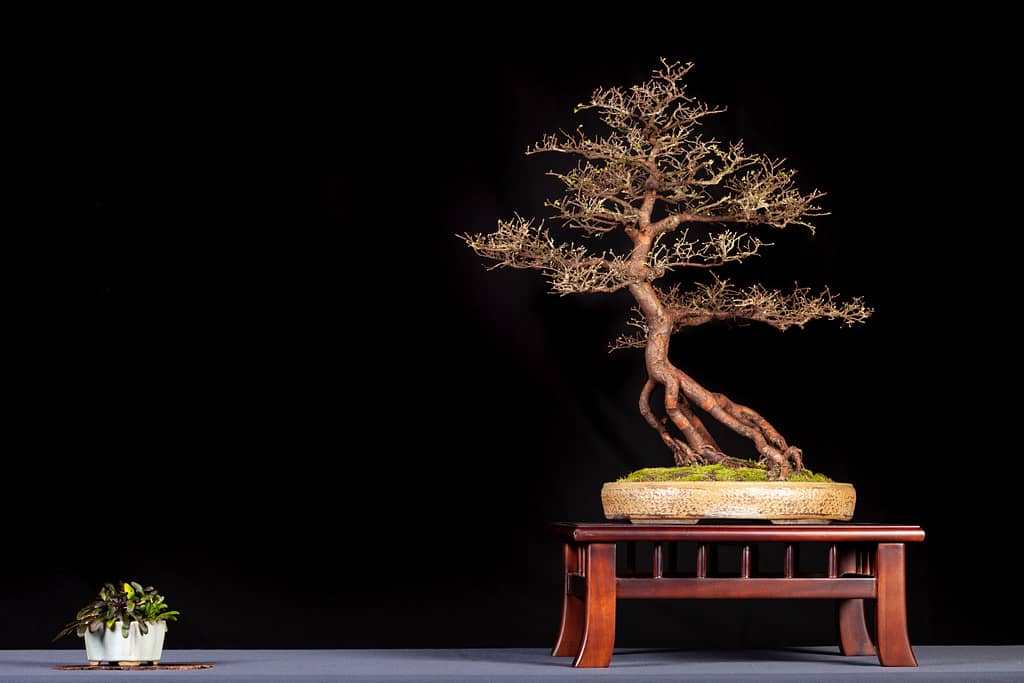
- I have no category name for this, but wanted to fit this tree in. This is a great execution of exposed roots on a Chinese elm. Exposed roots are typically not my favorite styles, but I think this is quite elegant and flows nicely into the natural curvature of the tree.
- The tree is well ramified and has good negative space with many varying angles, lengths, and thicknesses.
My Personal Favorite: Zelkova – Peter Macasieb
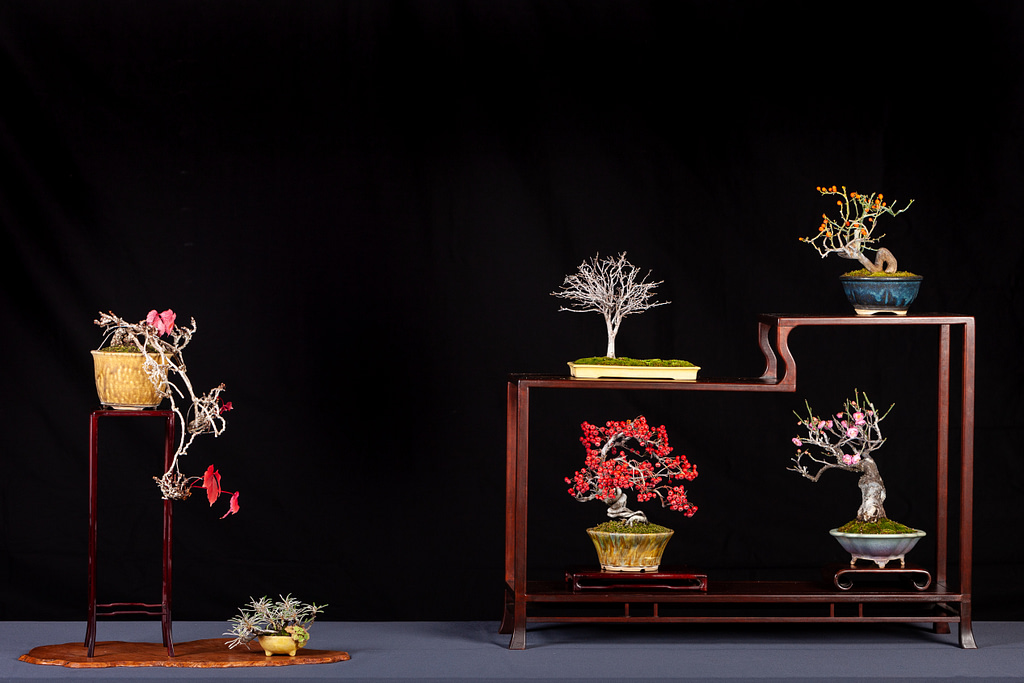
- I added a photo below for you to see the details on the Zelkova.
- Something about the longer than needed pot draws my attention and somehow both intrigues me and is off putting at the same time.
- I love how well this was grown from seed by Peter. It has natural branching that is nearly identical to a zelkova when it assumes its natural growth in the ground, and rounds out into a great silhouette of a deciduous tree.
- Its hard to tell from these photos, but the branches are well placed, and go in all directions.
- I’d love to see this with red fall color against that yellow pot.
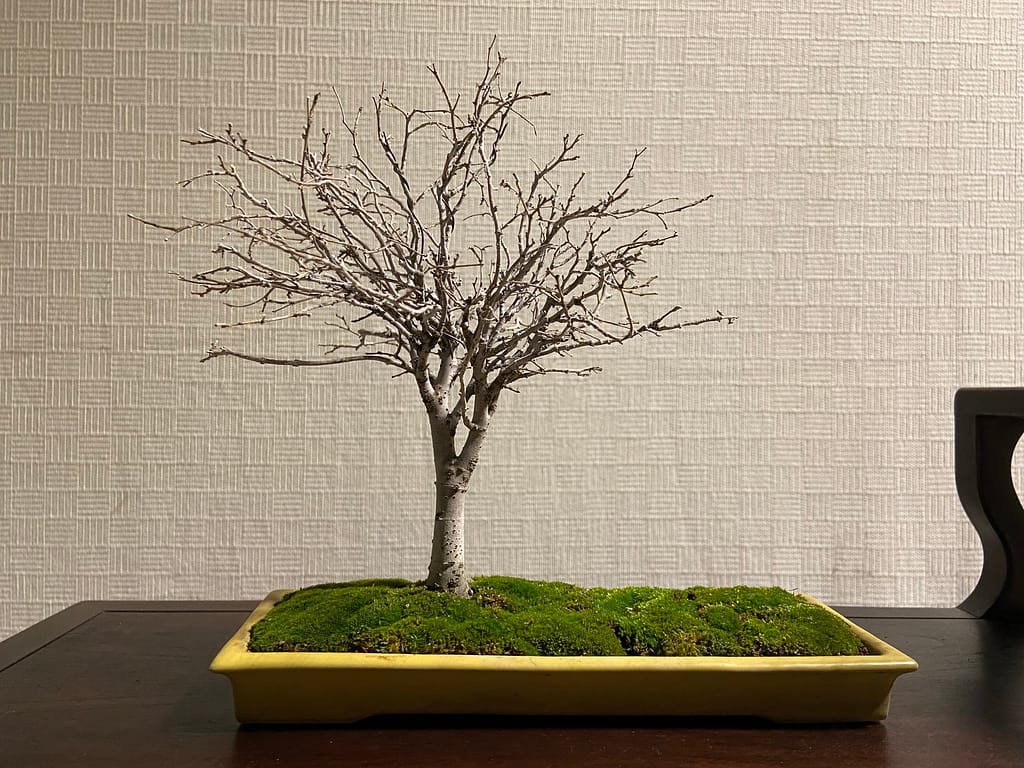
I really loved this show this year, and I’m excited to participate in it hopefully this coming year.
